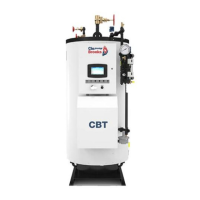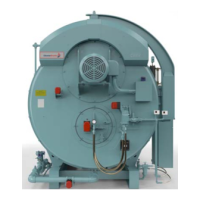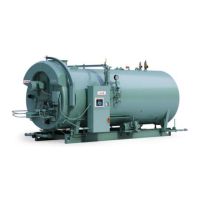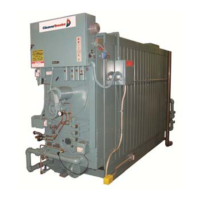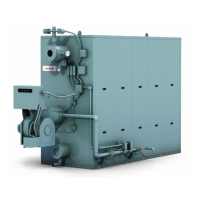39 750-265
Table 19. Burner Control Safety Parameters. (Continued)
Parameter Comment
Igniter on during Pilot Flame Establishing Period or First half of PFEP
This parameter is not needed and ignored if DBI (Direct Burner Ignition) is selected, because
the igniter is always on throughout the timed 4 second DBI period. Otherwise the igniter may
be on throughout the PFEP, or only during the first half of it:
• 2 seconds for a 4 second PFEP time,
• 5 seconds for a 10 second PFEP time,
• 8 seconds for a 15 second PFEP time.
When the igniter is external, it is on continuously during the defined period. However when
the igniter is selected as the internal spark generator then, during its on time as defined by
this parameter, it actually is intermittently on, then off, then on, then off, with each state
lasting 1/4 second. (This is done because flame cannot be sensed while the igniter is on, due
to hardware limitations, so flame sense and igniter spark are done alternatetly at a 1/4
second rate.)
Pilot flame establishing period
(PFEP)
4, 10, or 15 seconds
This parameter is ignored if DBI is selected. Otherwise there are three choices for the
duration of PFEP: 4, 10, or 15 seconds.
Flame must be on at the end of this period or a response occurs (see “Ignite failure response”
on page 39).
Main flame establishing period
(MFEP)
5, 10, or 15 Seconds
This parameter only appears if Pilot type is Interrupted. Three choices of the MFEP time are
provided: 5, 10, or 15 seconds.
Flame must remain on throughout the MFEP, otherwise a response occurs (see “MFEP flame
failure response” on page 39).
Ignite failure response Lockout, Recycle & Hold After Retries, Recycle & Lockout After Retries, Continuous Recycle
If a failure to ignite is detected at the end of the Ignition period, then there are four possible
responses:
• Lockout
• Recycle & hold after retries—the burner control recycles to the beginning of purge and
counts how many times this has occurred. If the retry count has been reached, a hold
occurs with the system purging. After the hold, the retry count is cleared and the burner
tries (and retries) again.
• Recycle & lockout after retries—the burner control recycles to the beginning of purge and
counts how many times this has occurred. If the retry count has been reached, a lockout
occurs.
• Continuous recycle—the burner control recycles without limit.
The retry counter is cleared during Standby (no demand), during the hold imposed by the
retry counter, or if flame is achieved.
Ignite failure retries 3, 5
This parameter provides the number of retries, either 3 or 5.
Ignite failure delay MM:SS
When Recycle & hold after retries is selected, this parameter provides the delay time for the
hold.
MFEP flame failure response Lockout, Recycle
During the MFEP state, if the flame fails there is a choice for the response. If lockout is
selected, a flame failure during MFEP causes a lockout. However, if recycle is selected, the
burner control shuts off the fuel and recycles back to the beginning of prepurge, then
continues with the normal burner startup process (prepurge, ignition, then run) to attempt to
light the burner again.
Run flame failure response Lockout, Recycle
During the Run state if flame fails then there is a choice for the response. If lockout is
selected for flame failure during Run. However, if recycle is selected, the burner control shuts
off the fuel and recycles back to the beginning of prepurge, then continues with the normal
burner startup process (prepurge, ignition, then run) to light the burner again.
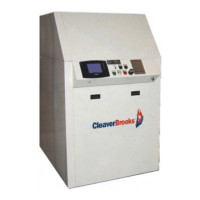
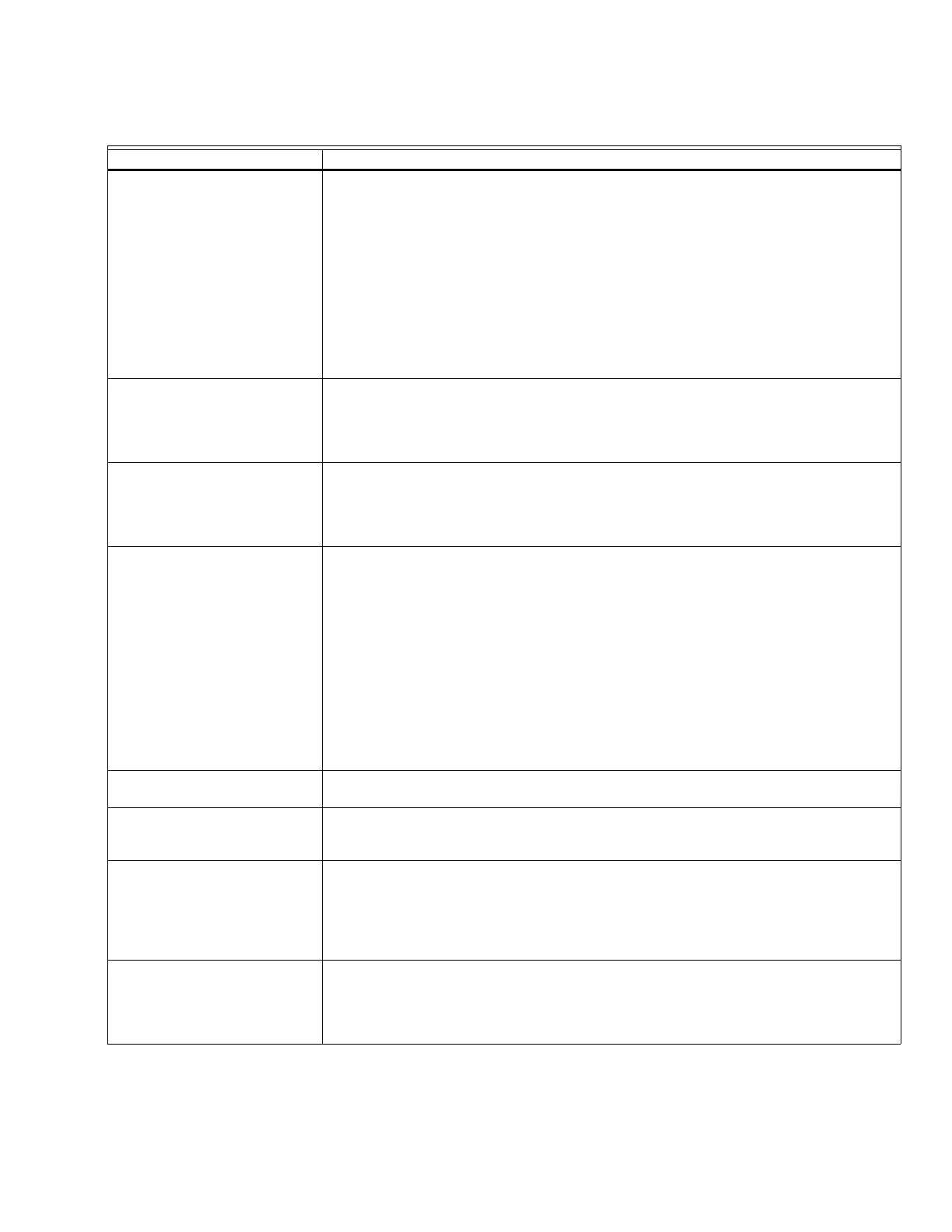